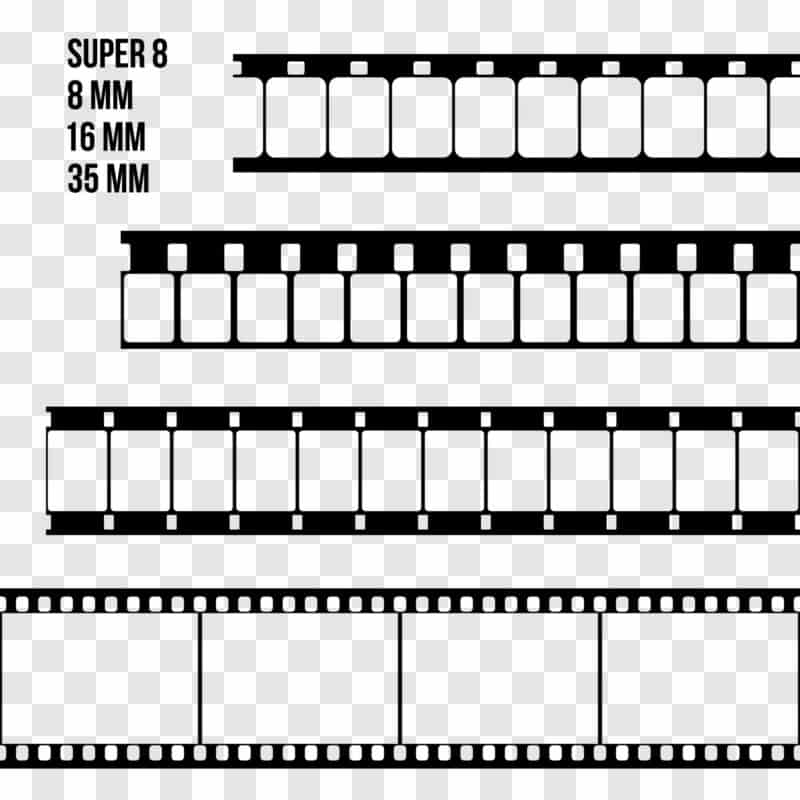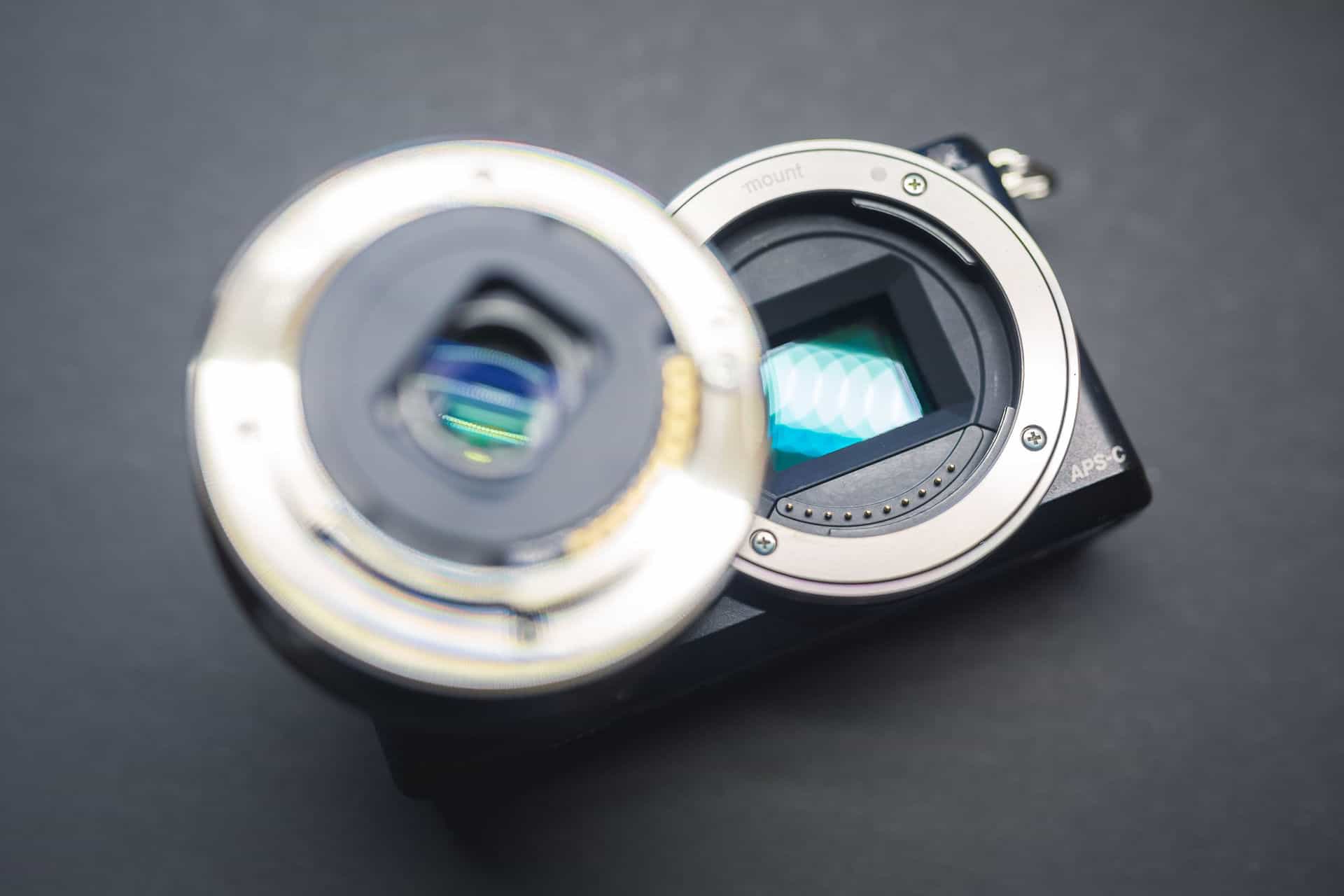APS-C and Super 35 are often looked at similarly because of their close sensor sizes. These sensors are used in cameras to capture light and convert it into the image you see on your screen. APS-C and Super 35 are mistaken for each other because their aperture dimensions are quite similar. While they share many similarities, they are used in different applications.
The difference between APS-C and Super 35 is their contemporary use. APS-C is no longer used for professional filmmaking and is found in most DSLR cameras. Super 35 is standard in filmmaking for directors and cinematographers. While similar in size, Super 35 has a slightly larger cropped frame.
Keep reading to learn the differences between APS-C and Super 35 camera sensors. Both of these capturing methods will often be compatible with similar lens types and sizes but offer significant differences for photography and film applications. They are both often compared to the growing popularity of full-frame sensors that capture a much wider shot.
Table of Contents
APS-C vs. Super 35?
APS-C and Super 35 are frequently grouped together more often than not because of their similarities rather than their differences. In breaking down each’s characteristics, we will detail them both to highlight which sensors work best for your individual application.
In most applications, APS-C and Super 35 are similar-sized sensors that are compatible with lenses designed to fit either shooting method. While you can still shoot Super 35 on film, both APS-C and Super 35 sensors are now found on digital cameras and will be referred to throughout this article.
What Is APS-C?
APS-C is an image sensor format that is used and found in many DSLR and compact system cameras. It was used for film in the 1990s but has since been phased out by other methods, including Super 35, and is typically used for still photography as well as 16:9 video capturing. Other than full-frame sensors, it offers one of the largest angles of view and depth of field.
While sizing between the two sensors can be similar, they vary substantially depending on the type of camera used. Each DSLR camera manufacturer has slightly different aperture measurements for their APS-C sensors, impacting the overall angle of view. Despite these variations, APS-C has an aspect ratio of 3:2 for photography.
For sensors similar to Super 35, APS-C has an aperture of 25.1×16.7mm. APS-C differentiates itself from Super 35 in its primary use in photography. You can still capture videos using APS-C settings, but it is not typically designated for filmmaking. APS-C is a versatile sensor used by professional and amateur photographers, with most lenses being produced to comply.
You should use APS-C sensors for the following applications:
- Close up images: Because the angle of view is cropped, the image will appear to be zoomed. If you are looking to shoot with more focus on an image subject, APS-C will make the image appear sharper. You can also make items appear closer than they actually are without having to zoom in and sacrifice quality in the smaller frame.
- Lens variety: Because APS-C sensors are widespread, most lenses have been designed to fit and accommodate them, giving you greater shooting versatility.
- Lighter equipment: Compared to full-frame sensors, equipment and cameras that use APS-C sensors will be lighter and smaller. This is beneficial for location shots and greater portability.
- Depth of field: Because of the smaller frame, a photo will have a high depth of field in comparing distances between focused items in the image.
Sources: Zeiss, Camera Jabber
What Is Super 35?
Super 35 is a filming method that was initially captured on 35mm film. The space on the physical film used for capturing audio would be used for the image as well. This allowed for wider capturing. Super 35 in a digital format captures video in similar frame sizes to APS-C. The aperture of Super 35 is 24.89 x 18.66 mm in 4-perf, making it slightly larger than APS-C.
Super 35 has become the standard of filmmaking and is often what moviegoers see onscreen. What makes Super 35 unique and attractive to filmmakers is the ability to produce content in any aspect ratio and use nearly any size or type of lens. This allows for greater versatility and creative opportunities while capturing content, keeping production costs lower as well.

Super 35 sensors allow for a focused angle of view that fixates on a more specific image or scene to draw a viewer’s attention. This zoomed or cropped shot prevents the viewer from becoming distracted and allows the picture to be sharper. You can best notice these differences compared to full-frame sensors that capture a much wider field of view.
Consider using Super 35 sensors for the following applications:
- Traditional filmmaking style: If you want your film to look like many of your favorite shooting styles, using Super 35 will help to capture a similar aesthetic. Ron Howard, Quentin Tarantino, and Martin Scorsese (among many other directors) have shot many of their films using this sensor size.
- Shallow depth of field: With the cropped image, there is a shallower depth of field, allowing you to minimize the distance between the closest and furthest objects on the screen. This allows for the nearest object to be in focus while the background images are blurred.
- Variety of lenses: To allow for greater creativity and resources, Super 35 sensors are compatible with a wide set of lenses. Vintage lenses and those with special effects can help you to capture unique styles from project to project.
- Wide dynamic range: Super 35 sensors are helpful in accurately capturing shadows and highlights to provide clear coloring on film. Other sensors may wash out the colors and take away depth from the shot.
Sources: Panavision, Learn About Film
Comparing APS-C and Super 35 for Use
The common misconception is to refer to APS-C and Super 35 as the same thing. While they do draw similarities in the dimensions of their framing and can achieve similar-looking results with the cropped frame, they are used quite differently. You will find “APS-C/Super 35” settings on many modern digital cameras that will use similar features to create the cropped look.
If you placed the two frames on top of one another, you would find that the Super 35 sensors have a slightly shorter width but a greater height. These dimensions will vary depending on the camera manufacturer.
Use APS-C as your go-to for photography and capturing stills. While it can be used for video capturing as well, it is not your traditional format for filmmaking. If you will be working primarily on films, consider opting for a Super 35 sensor. This will meet the more specific specifications of this filming format and replicate some of your favorite cinematography.
Because APS-C and Super 35 draw more similarities from a technical aspect in their cropped frame style, most comparisons of the methods are drawn against full-frame sensors. These comparisons will allow you to find the most significant differences in the field of view to find a shooting style that best matches your project and your desired outcomes.
APS-C or Super 35?
The types of projects you work on will largely dictate if you use APS-C or Super 35 sensors. For photography and many video projects, APS-C will be a suitable and flexible choice. Super 35 should be designated for filmmaking. When looking for a cropped or partial shot, both will help you to focus closely on the objects in the frame to grab the viewer’s attention.

